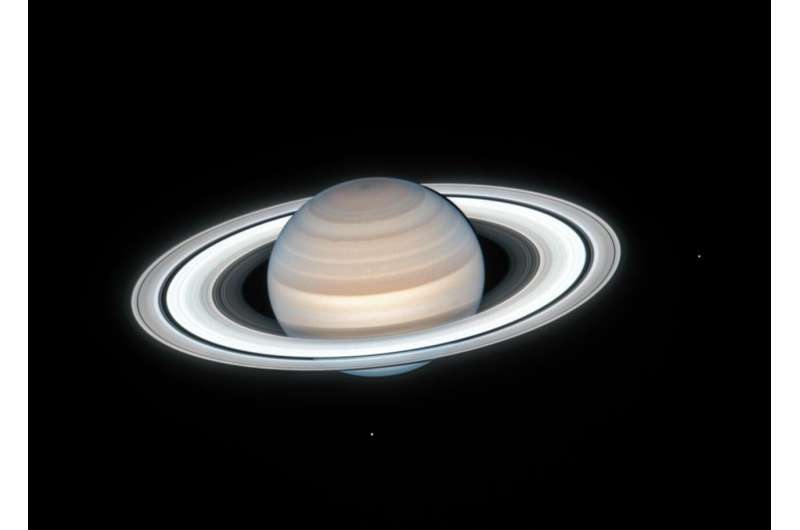This article has been reviewed according to Science X's editorial process and policies. Editors have highlighted the following attributes while ensuring the content's credibility:
fact-checked
trusted source
proofread
Image: A Saturnian summer

NASA's Hubble Space Telescope captured this image of Saturn and its colossal rings on July 4, 2020, during summer in the gas giant's northern hemisphere. Two of Saturn's icy moons are also clearly visible: Mimas at right, and Enceladus at bottom.
The light reddish haze over the northern hemisphere seen in this color composite could be due to heating from increased sunlight, which could either change the atmospheric circulation or remove ices from aerosols in the atmosphere.
Another theory is that the increased sunlight in the summer months is changing the amounts of photochemical haze produced. Conversely, the just-now-visible south pole has a blue hue, reflecting changes in Saturn's winter hemisphere.
This image was taken as part of the Outer Planets Atmospheres Legacy (OPAL) project. OPAL is helping scientists understand the atmospheric dynamics and evolution of our solar system's gas giant planets. In Saturn's case, astronomers continue tracking shifting weather patterns and storms.
Provided by NASA



















